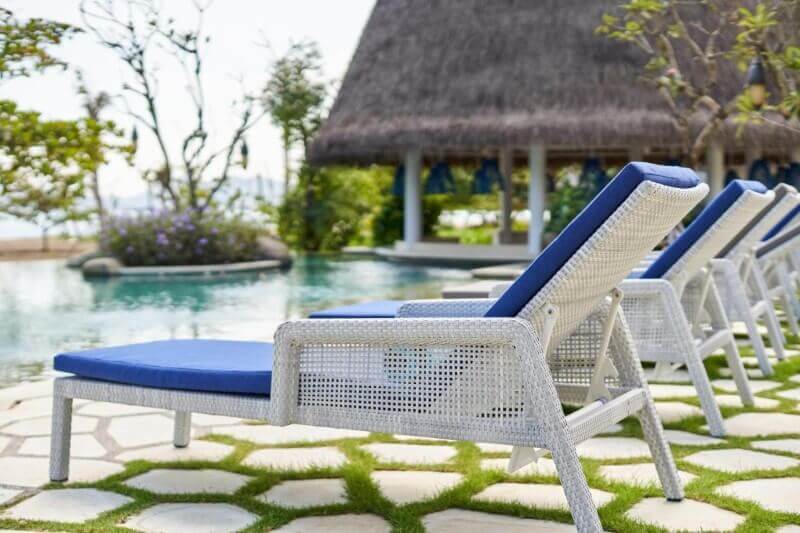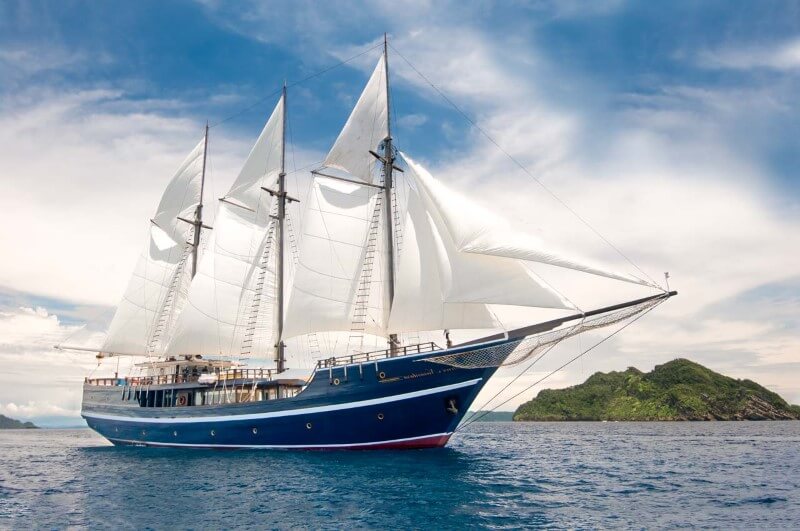Komodo National Park
Home to komodo dragons, Manta Rays, pink beaches, bat, and padar islands, Komodo National Park is a mesmerizing destination that offers an unparalleled diving and adventure experience.
Destination Highlights
Nestled within the Indonesian archipelago, Komodo National Park is a distinguished destination offering an unparalleled experience above and below water.
Renowned for its Komodo dragons, this UNESCO World Heritage Site extends its allure beyond terrestrial wonders.
It comprises a total of 29 islands, including the three main islands, namely Komodo, Rinca, and Padar, as well as numerous smaller islands that contribute to the park's rich biodiversity and captivating landscapes.
Komodo National Park captivates marine life enthusiasts with its over 260 coral and 1,000 species of tropical fish. The latest study in 2023 reveals that over 1000 identified Manta Rays inhabited this park; an additional treat for divers and snorkelers on top of the vibrant coral reefs, aquatic diversity, and awe-inspiring underwater landscapes.
Due to the limited rainfall in this region, the terrestrial areas of the Komodo Islands got a unique feature: predominantly dry and lacking significant vegetation. Yet, this UNESCO World Heritage Site has so much to offer above the water. If you are interested in light trekking, consider visiting Rinca or Padar Island. Alternatively, if you are an advanced trekker and your body fitness allows, strive to reach the summit of Padar Island. The view from the top is undoubtedly remarkable.
Embark on an unforgettable journey as we delve into the depths of Komodo National Park and explore the secrets that lie beneath the surface.
quick access
diving & highlights
Komodo diving and snorkelling offers one of the world's most exhilarating underwater experiences, renowned for its extraordinary biodiversity, powerful currents, and stunning coral reefs. Dive sites range from calm, shallow and colourful coral gardens to thrilling drift dives through fast-moving currents, making it ideal for divers of various skill levels, though the advanced experience is often recommended for some sites. From the first plunge, divers are surrounded by vibrant reefscapes teeming with life, from reef sharks to majestic manta rays and, of course, the famous Komodo dragon sightings on nearby islands.
Diving and snorkelling in Komodo is an adventure into some of the healthiest reefs on Earth, offering visibility that often exceeds 30 meters. Sites like Batu Bolong and Castle Rock are renowned for their robust marine life, with schools of trevallies, barracudas, and snappers swirling around divers, while hidden nudibranchs, pygmy seahorses, and colourful reef fish populate every nook and cranny of the corals. The waters around Komodo are also rich with pelagic life, offering divers thrilling encounters with large manta rays at Manta Point and even the occasional dolphin or whale shark. Drift dives here are unforgettable, as powerful currents provide effortless movement through kaleidoscopic reefs, although dive planning with an experienced guide is essential for safety and maximum enjoyment.
Whether you're a snorkeller, a seasoned diver chasing strong currents and big fish or a photographer looking for macro wonders in sheltered bays, Komodo promises a once-in-a-lifetime diving adventure, blending vibrant marine ecosystems with top-notch diving facilities in one of the world's most beautiful settings.
What to expect:
- Countless species of fish.
- Pristine vast coral garden.
- Macro: blennie, frogfish, ghostpipefish, pigmy seahorse nudibranch, clown fish, seahorses, variety of shrimp and crab
-Wide Angle: giant schools of fish, shark, rays, cuttlefish, turtles, lion fish, giant wrasse, dolphins and wobbegong.
Special Encounters
- Giant and Reef manta rays at the cleaning station.
- Mola-mola
- Whale Sharks
Type Of Diving
slope, drift dives, pinnacles
Diver Level
All levels of divers can dive in Komodo National Park, but please note that some dive sites can have strong currents. You may need to check the dive plan with your dive guide the day before.
Water Temperature
As Komodo National Park is a large area with many islands, the water temperature varies between the northern and southern parts of the park.
- Komodo North - 27-30 degrees Celsius.
- Komodo South - 21-27 degrees Celsius.
After several days of diving you may feel cold, especially at certain dive sites in the southern part of Komodo. Consider hiring a shorty wetsuit to wear over your wetsuit.
Visibility
Visibility underwater in Komodo National Park is between 7 and 40 metres (23-131 feet). The northern part of the park has better visibility, ranging from 20 to 40 metres. The southern part has visibility between 7 and 20 metres.
One advantage of choosing a liveaboard is that the operators are able to move to a different dive site when visibility is low, looking for better conditions.
Things to do in Komodo
Komodo offers an array of thrilling activities, from encountering magnificent dragons to watching thousands of fruit bats emerge from their island in the evening to diving in pristine waters and exploring picturesque islands.
- Encounter Komodo Dragons: Take a guided trek to observe the iconic Komodo dragons.
- Dive in Pristine Waters: Explore world-class dive sites with vibrant coral reefs and diverse marine life.
- Snorkel and Swim: Enjoy snorkeling in crystal-clear waters, spotting tropical fish and sea turtles.
- Visit Pink Beach: Relax on the unique pink sands and indulge in swimming and snorkeling.
- Hike Padar Island: Climb for stunning panoramic views of turquoise waters and tri-colored beaches.
- Explore Secluded Islands: Join boat tours to discover hidden gems around Komodo.
Best Time to Visit Komodo
The best time to visit Komodo National Park for diving and exploring its natural wonders is during the dry season, which typically spans from April to December. This period offers favorable weather conditions with less rainfall and calmer seas, allowing for better visibility and enjoyable diving experiences.
The peak season, from July to August, attracts more visitors, so if you prefer fewer crowds, consider visiting in the shoulder months of April, May, September, or October.
It's important to note that while diving is possible year-round in Komodo, the wet season (January to March) brings stronger currents and reduced visibility, making it less ideal for diving. Planning your visit during the dry season ensures optimal conditions to fully appreciate the incredible underwater realm of Komodo National Park.
How to get to Komodo
To visit Komodo National Park, fly into Komodo Airport in Labuan Bajo, Flores (LBJ), then arrange a boat trip to the park. Some liveaboards also offer convenient departures from Bali.
Komodo's diverse underwater conditions make it an ideal destination for both liveaboard and day-trip diving. Liveaboard cruises, which range from budget to luxury, are popular choices, allowing divers to reach the park's most remote and pristine sites and maximise their diving experience. Meanwhile, Labuan Bajo, the gateway town to Komodo, offers a range of dive operators providing day trips to the park's popular spots.
The boat journey will take you to the different islands within the park, allowing you to explore the diverse landscapes and engage in activities like trekking, diving, and snorkeling.
Choose your holiday style....
To fully immerse yourself in the diving wonders of Komodo National Park, consider embarking on a dive safari or liveaboard adventure. These allow you to explore a wide range of dive sites throughout the park, including those that are more remote and less frequented. Especially if you are a diver who wishes to explore all the best underwater sites of Komodo National Park in the Northern and Southern parts. If you want to focus on island hopping, it can be done both from land-based accommodation and liveaboards.

Resort/Land Based Hotel in Komodo
If you're looking for the perfect blend of relaxation and .dventure, look no further than a land-based resort in Labuan Bajo!

Liveaboards
Liveaboard is the perfect choice for keen divers who want to explore all the best dive sites of Komodo National Park!
Tips for Exploring Komodo Responsibly:
Make sure to follow the park's regulations and respect the fragile ecosystem by not littering and refraining from touching or disturbing the wildlife. Remember to bring essentials such as sunscreen, hats, comfortable clothing, and snorkeling or diving gear. With proper planning and adherence to guidelines, you can have an incredible visit to Komodo National Park.
